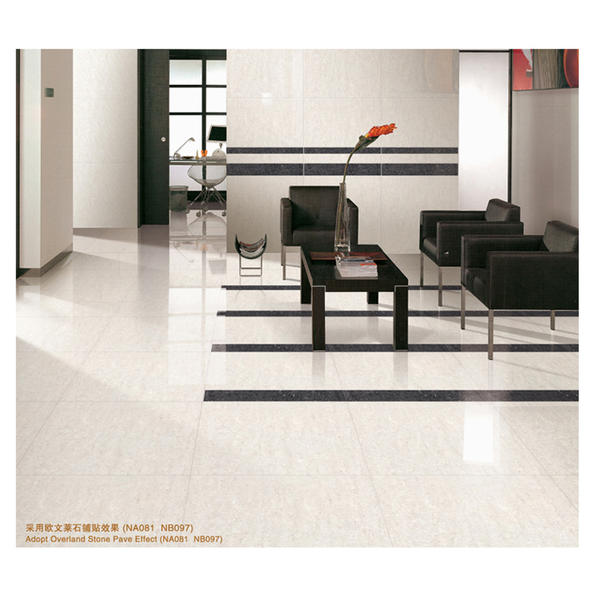
1. No radioactive elements: Natural stone is a kind of mineral and does not have high temperature sintering, so it contains a few trace radioactive elements, which is harmful to the human body after long-term exposure; Polished tiles will not cause harm to the human body;
2. Mainly controllable and no color difference: natural stone has large color difference due to different rock formation time and rock depth, polished porcelain tiles are carefully adjusted, and the design colors of the same batch of products are consistent, and there is basically no color difference;
3. High bending strength: The natural stone is dense, and the strength varies with natural formation, completion time, weathering, etc. The polished tiles are pressed by thousands of tons of hydraulic press and sintered at a high temperature of 1200℃ with high strength;
4. Thin bricks and light weight: Natural stone has low strength and large processing thickness, which increases the load weight of the building on the floor, posing a potential threat, increasing the cost, and increasing the difficulty of transportation and laying.
5. Advantages: non-slip: the safety of the polished floor tiles is very important, especially for families with elderly people, the anti-slip effect of the tiles is more important. Polished tiles have a bright surface. Many consumers think that it has poor anti-slip effect. In case of sprinkling water, it will increase safety risks. In fact, all polished tiles are non-slip. If there is mud on the tiles, they will slip, but water will cause problems. It becomes astringent, so as long as daily cleaning is done, it will not affect its anti-slip effect. In terms of non-slip performance, polished tiles and matt tiles are the same.

Polished tiles are bright tiles made by polishing the surface of the tiles. For other tiles, polished tiles need to be smoother. Polished tiles are hard and durable, suitable for most indoor spaces except bathrooms and kitchens.
Based on the application of flower penetration technology, polished tiles can produce various imitated stone and wood effects. Due to the influence of aesthetic factors, the types of ceramic tiles on the Chinese market have always been large, high-end, gorgeous polished tiles, such as polished tiles, ultra-fine powder tiles, glass-ceramics, polycrystalline powder, etc.
A large number of high-end polished tiles are dazzling. The birth and development of these high-end products are due to the large-scale production of the market, which is in line with the pursuit and aesthetic vision of our consumers. It not only has the visual effect of luxurious atmosphere, gorgeousness and large space, but also represents identity and image to a certain extent.
Polished tiles may cause surface contamination due to improper use. Several common surface pollution treatment methods are as follows:
1. Tea stains, fruit stains, coffee sauce vinegar, leather shoe prints and other stains
Use sodium hypochlorite diluent or bleach, soak for 20-30 minutes and wipe with a cloth; some stains that have penetrated into the bricks for a long time may require several hours to soak.
2. Moldy spots formed by mildew of ink and antifouling wax.
Use sodium hypochlorite thinner or bleach. Apply the bleach to the stained area for a few minutes and then wipe it off.
3. Cement, scale, rust, rust spots
Use hydrochloric acid or phosphoric acid solution and wipe several times.
4. Paint, oil stain, oily marker, surface antifouling wax layer
Use alkaline cleaners or organic solvents (5-ketone, triethylene) to remove paint and grease.
5. Rubber hammer printing decontamination
Cleaning method: first soak in 20%-40% sodium hydroxide (NaOH) solution for 24 hours and then wipe with a cloth, then use 30%-50% hydrochloric acid (Hcl) solution for 30 minutes and then soak with cloth Wipe clean.
Remarks: 1. Wear rubber gloves when using the above decontamination agents; 2. After removing the stains, wipe the brick surface with clean water;
Copyright © 2021 Guangzhou Weyes Network Technology Co., Ltd. | All Rights Reserved